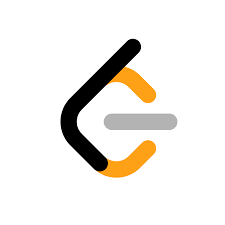4 Key Importance of Data Structures and Algorithms.
Many developers report that they rarely or never use Data Structures and Algorithms (DSA) in their day-to-day work. However, when you begin your job search, you’ll discover that most interviews, especially at top tech companies, involve whiteboard exercises to assess your DSA knowledge. This raises the question: ‘Why are candidates tested on DSA when there’s a high likelihood they won’t be applying them on the job?’
In this article, we’ll see that understanding data structures and algorithms goes beyond software development. We often use DSA concepts in our daily tasks without realizing it. When you practice DSA and tackle problems, you’re not just showing coding skills. You’re also demonstrating essential skills like your problem-solving ability, grasp of programming basics, designing a solution, determine test cases, walking through them and critical thinking. From the interviewers’ standpoint, it’s easier to gauge the competency of the candidate.

1. Cracking coding interviews on data structures and algorithms
Here’s a famous tweet by Max Howell, the creator of homebrew, his story is that he once interviewed for a software developer position at Google but he got rejected because he could not invert a binary tree!

The key takeaway from his story is that, when it comes to interviews, DSA is an important concept to know, despite you being regarded as a phenomenal developer in the tech industry. This is because top companies such as Google or Facebook want to work with optimized algorithms that can scale and will save the company thousands of dollars, so the task of the interviewer will be to find a candidate who can apply the right set of tools or logic to solve the given problem. So, to make the cut, practice DSA! Leetcode is a good starting point for you to start practicing.
2. Solving real world problems.
We can also mention that whether you are interested in getting into the top tech giant companies or not, DSA concepts still help a lot in your day-to-day life. How is that? I’ll use one common activity we perform that needs a common algorithm to be implemented. If you need to search for a word in a dictionary, let’s say the word is ‘School.’ You usually don’t start from the first page and go page by page until you find the word. Instead, almost everyone uses the same approach.
You first open to some random page within the dictionary. If the word you’re looking for is not on that page, you check whether the letter at the random page you landed on comes before or after the letter of the word you’re looking for. If it comes before, you continue with the same process until you find the word. If it comes after, you move backward until you find the word. In this scenario, you’ve implemented a common algorithm known as Binary Search.
3. Efficiency
Efficiency is paramount when we discuss suitable algorithms for a particular solution. An algorithm’s efficiency is determined by the time and space it takes to run. Better algorithms will undoubtedly consume less time and space. Well-chosen data structures and optimized algorithms can significantly reduce the time and resources required to complete tasks. They can make the difference between a responsive application and one that lags.
An example, like the one given above about searching for a word in a dictionary, illustrates that it will take less time to find the word you’re looking for when you implement Binary Search than when you start the search from the first item in the dictionary. This highlights the efficiency and effectiveness of well-designed algorithms in optimizing tasks and saving time

4. Scalability
As software systems grow and user demands increase, scalability becomes a critical factor. The right algorithm allow systems to scale gracefully.
For example, a social media platform must efficiently handle the growing number of users, posts, and interactions. Through proper data structure choices (like efficient indexing) and well-designed algorithms (for data retrieval), the platform can maintain performance as it scales..
Conclusion
In conclusion, data structures and algorithms are the cornerstone of computer science and software development. Learning and mastering these concepts not only empowers you to solve complex problems but also provides a competitive edge in the job market. As you embark on your learning journey, remember that the path may be challenging, but the rewards in terms of career opportunities and problem-solving capabilities are boundless.
If you need to embark on your DSA journey, Zindua School can be a great place to start learning with our you-tube series on DSA. You can also go ahead and read this blog on acing your next technical interview.






